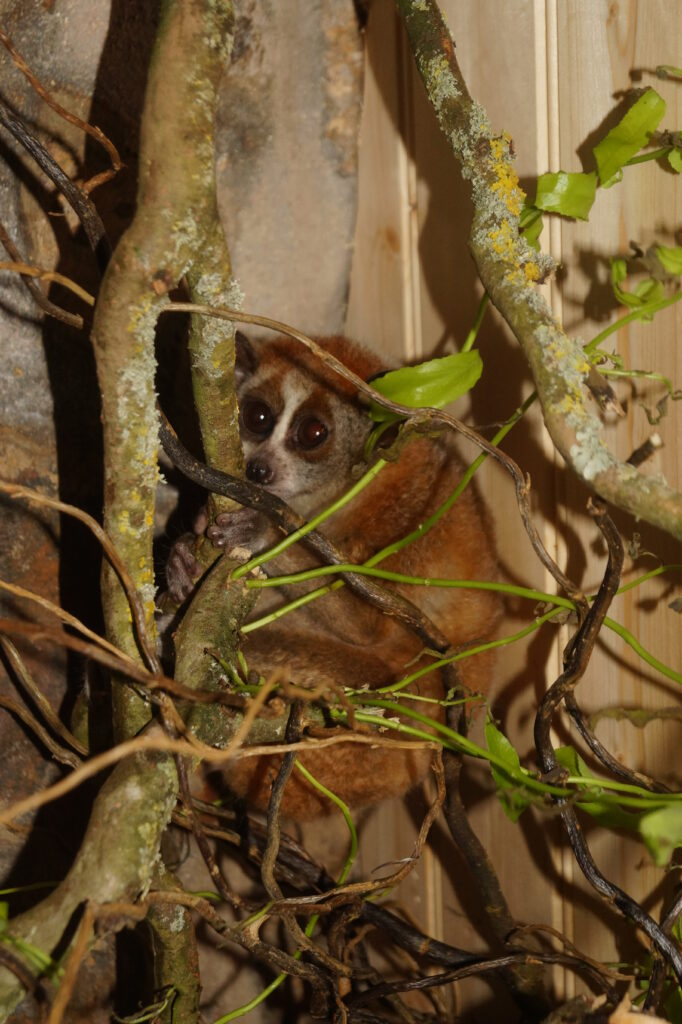
Pygmy slow loris
Class: Mammals
Order: Primates
Family: Lorisidae
Genus: Nycticebus
Species: Pygmaeus
Geographic distribution: Southeast Asia
Habitat: Tropical forest, in the canopy, 3 to 12 m high
Size: 15 to 25 cm
Longevity: 17 years
Weight: 350 to 600 g
Sexual Maturity: 9 to 20 months depending on sex
Gestation: 6 months
Litter: 1 to 2 young
Diet: Gum, nectar, leaves, and buds
Protection Status: IUCN Status CR – Endangered
Description
In Vietnamese folklore, pygmy slow lorises are called “khigio” or “monkeys that move with the wind”. They are considered a sign of bad luck and are used for black magic. Pygmy slow lorises have modified sweat glands near their elbows, enabling them to produce a toxin. By licking these toxic secretions, their bite also becomes toxic and dangerous for humans.
Threats and preservation
Pygmy slow lorises are used for medicinal purposes in Cambodia, where they are roasted, dried and processed into medicines. Deforestation is also threatening the species’survival. During the Vietnam War, slow pygmy loris populations declined significantly due to bombing, clearing and the use of chemical agents, destroying much of their natural habitat in Vietnam, Laos and Cambodia.